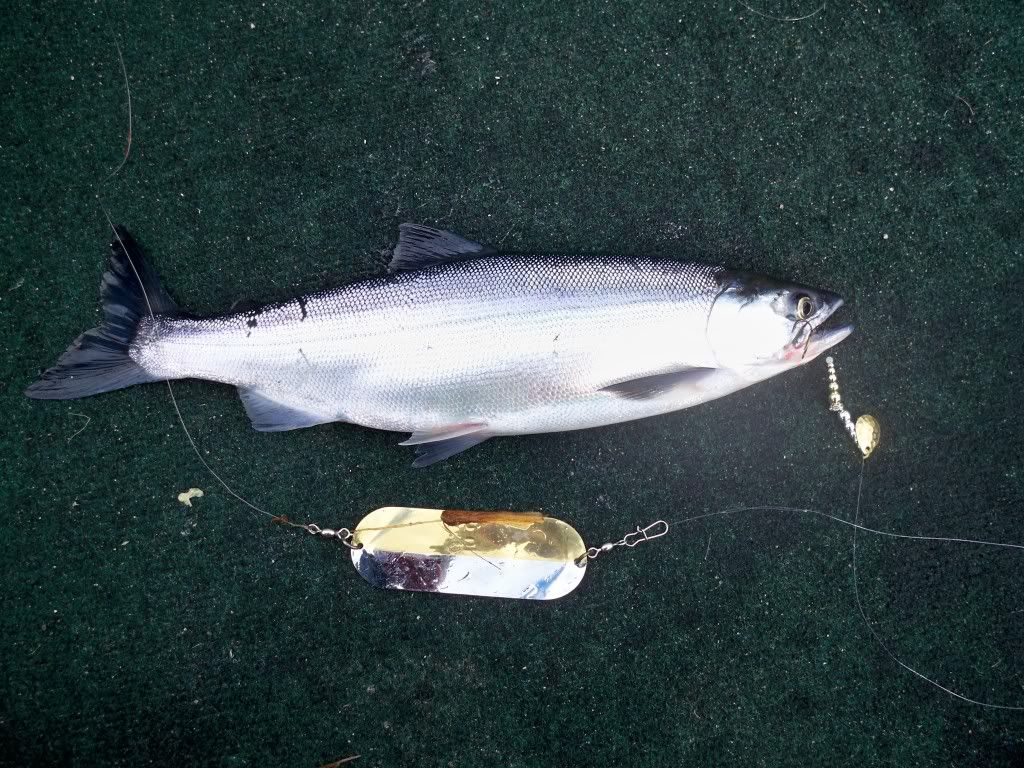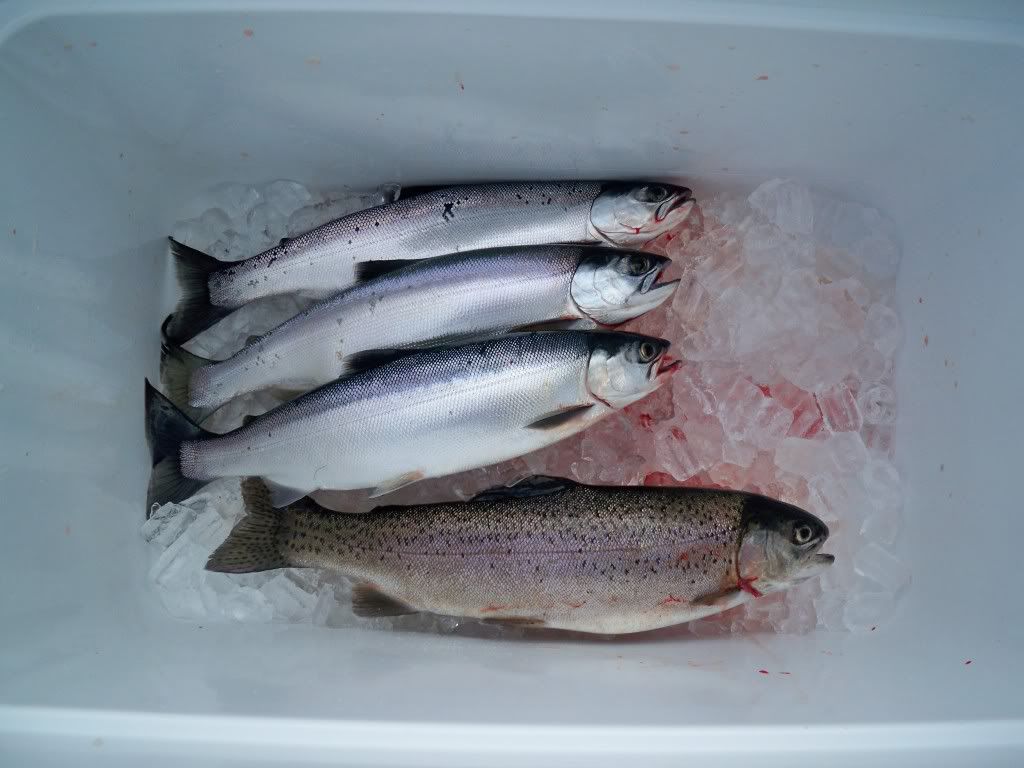I posted this in the May 2014 Lake Chelan Gathering but it is good information so I thought it could go here.
"Effect Of Plankton On Light In The Water Column
Plankton is the general term. Phytoplankton is the plant plankton that forms the bulk of the kokanee diet. Phytoplankton is light dependent, reacting with light to grow. Because it is plant, it does not move around on its own, but is pushed about by currents and wave/wind action. Phytoplankton has its own set of minimum light and nutrient requirements.
Zooplankton is the animal plankton. Zooplankton feeds substantially on the phytoplankton. Zooplankton has the ability to move about without being totally dependent on current and wave/wind action. For our kokanee, the most important zooplankton are daphnia (water fleas). Daphnia are intolerant of light and when sunlight hits the water, daphnia descend down the water column. In spring, the kokanee are waiting for them from below. The chase often ends (or continues) with kokanee jumping out of the water, much to our entertainment.
The absolute enemy of kokanee is the tiny mysis shrimp. Mysis eat the phytoplankton at such a rate that it virtually eliminates the food supply available to young kokanee. If there are no young kokanee, soon there will be no mature kokanee. These lessons were learned too late in Flathead Lake and Lake Tahoe.
Plankton growing in the water scatters light. But this scattering of light is actually a good thing for the kokanee fisherman because of the growth of plankton in the water. Kokanee are filter feeders, and their diet consists of this plankton. Without this plankton, there would be no kokanee fishing. More plankton, more food, more scattering of light. So bring on the light scattering plankton!!
When light is scattered, there is less of it to penetrate below what scattered it. In the case of plankton, it can be thought of as a canopy effect. The growing plankton shades the water beneath it. Again, less light below. In a healthy kokanee lake or reservoir, there will always be less light at depth."
http://www.fishwithgary.com/kokanee_uni ... part1.html
http://www.bonnercountydailybee.com/new ... 963f4.html
" At first, kokanee size and numbers surged because the large, mature kokanee ate the newly-available mysid shrimp.
• As subsequent generations of kokanee were produced, they had to compete at an early stage for the most critical part of their diet.
• As young kokanee lost ground against the mysid shrimp, and starved or failed to thrive, mature kokanee either reached their lifespan or were fished out.
• Gradually, overall numbers began to decline."
http://www.greatcanadianlakes.com/briti ... _page2.htm
In regards to the Oregon lakes with record and large kokanee some years.
I am trying to understand my opponent, kokanee. In my research mysis shrimp doesn't mean that there will be consistently big fish. It appears that when there is an abundance of mysis it kills a lot of the small kokanee because they eat the same food, zooplantain. Unless there is a large flow in the lake to exchange the nutrients. Therefore, the one generation almost dies out giving more food for the older generation. That generation grows larger. But in some instances several lakes kokanee have crashed because that generation of large fish spawn out. Others have a few large fish for a year or two and then come back with abundance of small kokanee. This has happened at Wallowa.
2013 Oregon derbies have won with small fish (or average depending on what you are use to).
Odell Lake large fish just under 13 inches
Green Peter large fish just under 11.5 inches
Wickiup no individual fish just total team weight
Predicting Wallowa downfall
http://www.oregonlive.com/sports/oregon" onclick="window.open(this.href);return false; ... _lake.html
Increase limits of small fish
http://www.dfw.state.or.us/news/2013/may/052213c.asp" onclick="window.open(this.href);return false;












